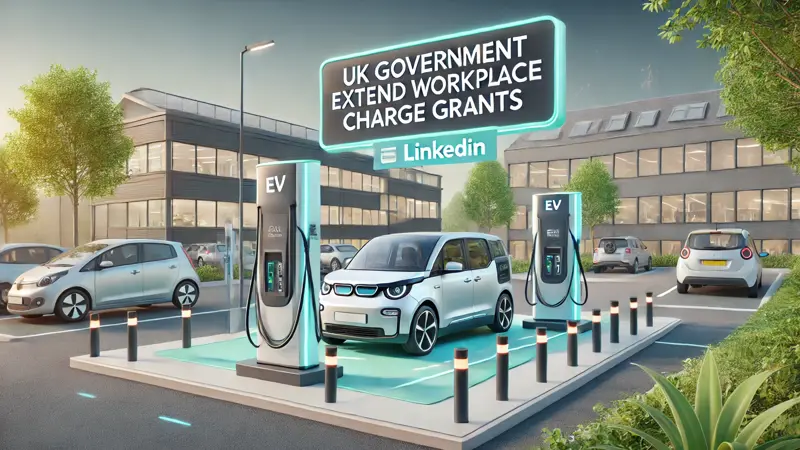
EV News: New Budget Breakdown, and 2025 Projections
Budget Breakdown
There was much anticipation surrounding the Labour Government’s budget announcement last Wednesday, but what about EVs? We break down some key takeaways for the transport and energy sectors and what we can expect over the next few years.
Road to 2030
Before the announcement, there was much debate in the industry as to whether the government planned to follow through on its proposed new (or old) deadline of 2030 for a ban on new ICE sales.
As it turns out, they’ve committed to 2030, although caveated it with a 5-year addition for PHEVs.
That means that if Labour’s plans are successful, we can expect a full phase-out of ICE and PHEV sales by 2035.
Road Tax for EVs introduced, but incentives still promised
After many years of enjoying the benefits of EVs tax-free, EV owners across the country will have received letters last month notifying them of upcoming changes. As of April 2025, EVs will no longer be exempt from road tax.
This is to be expected as the number of EV adopters has continually risen over the years, with the Treasury needing to address the gap in revenue this has caused.
However, EV drivers will still be able to enjoy highly reduced rates in a bid to encourage ZEVs. The first-year VED rate for new zero-emission vehicles will remain low at £10.
For hybrid vehicles emitting 1-50 g of CO2 per km, a first-year rate of £110 will be introduced, which will be raised for heavier emitters to £130.
Finally, ICE vehicles emitting more than 76 g/km will see their VED rates double in 2025-26, making traditional fuel-powered cars significantly more costly regarding road tax.
The government is also considering raising the VED “Expensive Car Supplement” threshold for zero-emission cars in the future, which could help make higher-end electric models more accessible.
Company car tax incentives for electric vehicles
Also announced were changes to Company Car Tax rates, which aim to further support the transition to electric.
For ZEVs, incentives are set to remain in place, taking a 2% rise each year up to a cap of 9% in 2029-30.
Hybrid vehicles will again see higher rates, increasing more steeply year-on-year to reach an 18% cap by the same deadline.
And once again, ICE vehicles will see a doubling in the rates to reach highs of 39% by the same year.
Investments announced for our electric infrastructure
In more good news for the sector, the government announced plans to invest over £200 million in 2025-26 to increase the scope of the public charging network.
A further £120 million will be allocated to support the purchase of new electric vans through the plug-in vehicle grant scheme. This grant also covers support for the manufacture of wheelchair-accessible electric vehicles, making electric options more accessible to a broader range of drivers.
The government will also maintain tax incentives for businesses, such as “100% First Year Allowances on EVs and EV charge points”. These allowances are available for an additional year, meaning businesses that invest in electric infrastructure will benefit from a full deduction in the first year.
Given the recent investments in gigafactories and EV skills centres alongside the commitment to expanding the public infrastructure, there are a lot of positives to be found in the government’s plans for the industry.
The recent raising of the road tax on EVs was expected by many in the industry, but some experts are still disappointed with the government’s persistence with high rates of taxes on public charging.
Overall, we look forward to seeing what increased government investment can bring to the UK’s infrastructure and maintaining the importance of championing fairer costs and incentives for EV drivers.
EVs on roads worldwide are expected to number 85 million in 2025
Elsewhere this month, there was more positive news for the future of the EV industry as US-based market research firm Gartner released its projections for as many as 85 million electric vehicles to be on the road worldwide in 2025.
With the 2024 figures sitting at around 63 million combined EVs and PHEVs, the projections suggest a 35% increase in global figures in just one year.
By 2025, Gartner estimates that 49 million EVs will be on the road in China, compared with 20.6 million in Europe and 10.4 million in North America.
In a year that has seen sales stall and models delayed at different points, these projections are a significant reminder that while demand can fluctuate, the underlying growth of the industry still places it as one of the most exciting and rapidly growing sectors in the world.
EVBox closure
And finally this week, we come to the sad news you may have come across over the past week.
Huge EV charging manufacturer EVBox announced plans to close its software (Everon) and AC charging offerings after failing to find a buyer over the past few months.
The Dutch-based company is set to have its DC charging branch (EVTronic) taken over by French company Financière de Pessac.
Despite pledging to honour the agreements of its existing contacts, maintaining around 100 employees to do so, work will cease on its pre-installed Everon software system, which will become obsolete as contracts expire.
As a long-time trusted software partner of EVBox, we were saddened but not necessarily surprised by the announcement as it broke in the Dutch publication Het Financieele Dagblad (FD).
Now, customers using the EVBox Everon software only have a certain amount of time to switch before their existing software package winds down.
We’ve been offering free 1:1 support with our own Modestas Gliaudelis, an ex-employee of EVBox of seven years, to help provide clarity on the next steps for those looking to migrate.
If you’d like to explore the impact of the closure on your operations, and learn about the easiest way to migrate you can book a meeting using the link here.
That’s all for our round-up this week! Make sure to keep up to date with our social channels to stay informed on all developments EV charging, and how you can best prepare yourself for an electric transition.


